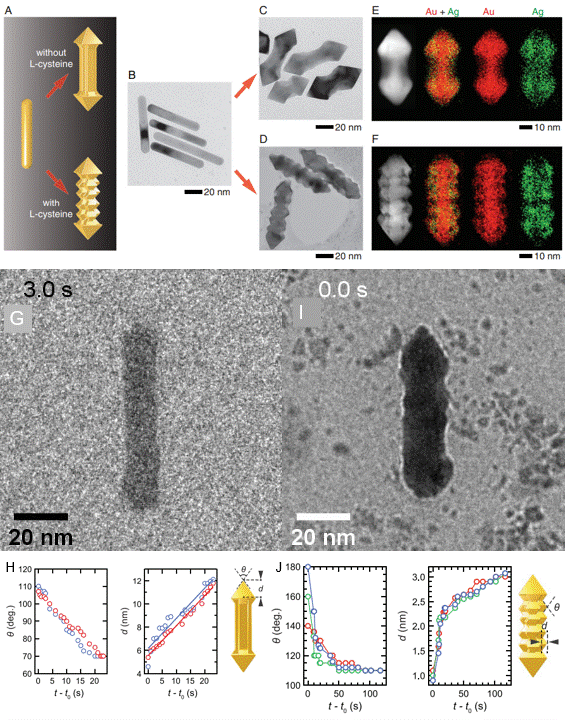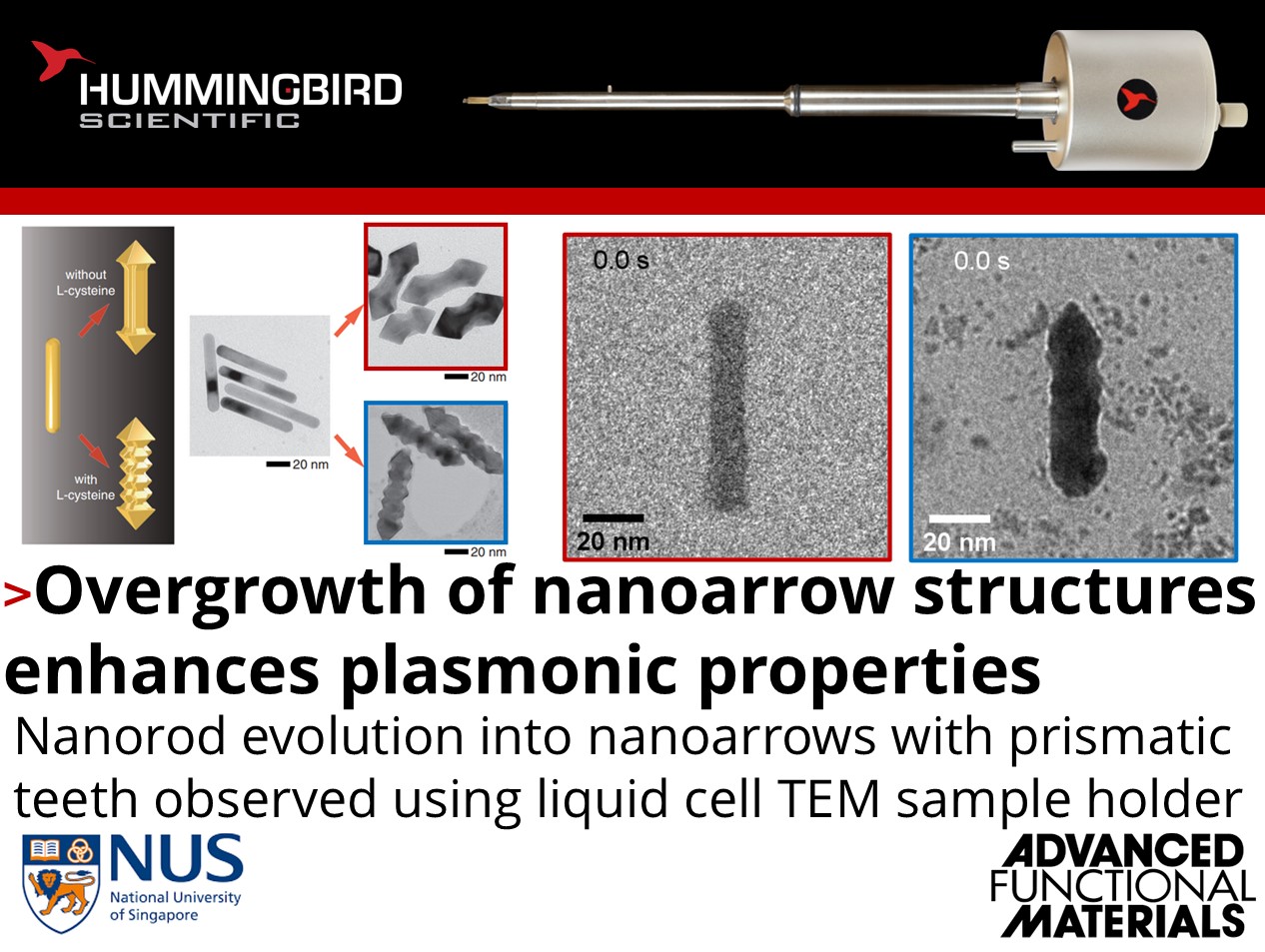How does growth solution chemistry affect nanoparticle morphology?
Wenhui Wang, Utkur Mirsaidov, and their colleagues at the National University of Singapore published recent work using their Hummingbird Scientific in-situ liquid flow TEM sample holder to investigate the effect of solution chemistry on anisotropic nanorod overgrowth. Gold nanorod seeds were imaged in situ in different growth solutions, and their respective morphological evolutions were characterized and linked to differences in plasmonic properties using COMSOL simulations.

Concave and sawtooth nanoarrows (CNAs and SNAs) synthesized from Au nanorods (NRs). a) Schematic of a CNA and SNA that form from an NR. TEM images of b) seed Au NRs, c) CNAs, and d) SNAs. Dark-field STEM images and corresponding EDX elemental maps for e) a CNA and f) SNA. g) In-situ TEM video showing the formation of a CNA from an NR in a precursor solution without L-cysteine. h) Plots showing the evolution of the apex angles and heights of the arrowhead tips as a function of time. t0 is set as the timepoint at which the change in morphology of the NP is first detected. Red and blue colored open circles correspond to the top and bottom tips. Heights increase at a rate of ≈0.25 nm s−1. i) In-situ TEM video showing the growth of an SNA in the presence of 0.5 mm L-cysteine. j) The angles and heights of teeth forming on the sidewalls of the SNA as a function of time. Red, green, and blue colored open circles represent the respective heights and angles of the three teeth circled with the corresponding colors in panel I. Copyright © 2021 Wiley-VCH GmbH
Nanorod seeds are observed growing into nanoarrows with four-fold symmetry, while the addition of thiol molecules such as L-cysteine to the growth solution yielded periodic prismatic teeth along the nanoarrow sides. It was revealed that thiol molecules in a reaction solution bind to the nanorod surface, reducing the deposition rate of metal atoms with respect to the adatom diffusion rate, and switching the growth mechanism from kinetic to thermodynamically controlled. New insights into nanoparticle overgrowth mechanisms will enable precise tailoring of nanoparticle surface morphology in a range of photocatalytic, plasmonic, and pharmaceutical applications.
Reference: Wenhui Wang, Ivan Erofeev, Proloy Nandi, Hongwei Yan, Utkur Mirsaidov, Advanced Functional Materials (2021) DOI: 10.1002/adfm.202008639
Full paper Copyright © 2021 Wiley-VCH GmbH
View All News

